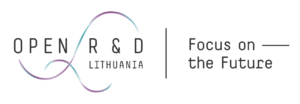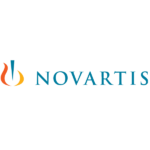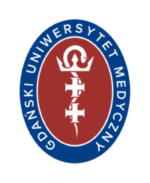Pharmacological innovation: from goat colostrum to cell therapy

Lithuanian cosmetics have established a good name for themselves in the national market. Now these organic, natural and effective products developed on the basis of a collaboration between scientists and businesses are making serious advances abroad. Pharmaceutical companies in Lithuania and beyond will undoubtedly be interested in the cell therapy products, biopharmacological technology for producing therapeutic proteins and next-generation drugs that Lithuanian science has to offer.
This field is predominantly the focus of researchers from the Lithuanian University of Health Sciences (LUHS) and the Centre for Innovative Medicine (CIM). Helping advanced ideas and innovative products find their way to investors in Lithuania and abroad is the open research and development network OPEN R&D LITHUANIA, which brings together all of the country’s national universities, research institutes, R&D parks and open access centres.
For the Lithuanian market and beyond
“In Lithuania, the cosmetics industry is well-developed. The past few years have brought us many different products. They are safe and use natural plant-based ingredients,” explains Laima Matusevičienė, head of the LUHS Development Service.
Researchers from the LUHS Faculty of Pharmacy are working with various businesses to develop cosmetics products for both the Lithuanian market and foreign markets. The faculty’s list of clients is a substantial one – LUHS collaborates with almost all Lithuanian cosmetics manufacturers.
According to Matusevičienė, researchers have recently launched into a collaborative endeavour with food manufacturers in the creation of functional food. These new types of products are enriched with various nutrients in order to promote various functions. For example, a product might induce a calming or stimulating effect, and consumers could simply buy these products in grocery stores.
Natural, organic and science-based
“At this point we have collaborated with over 30 businesses and all of them sought to make their products safe to use and of high quality,” emphasises Professor Jurga Bernatonienė, head of the LUHS Pharmaceutical Technology and Social Pharmacy Department.
Just recently, we partnered with the Valerijonas pharmacy in Šiauliai to develop Razalija, a line of innovative skincare products. These products are unique because they contain brown seaweed, which mitigates the ageing process in the triangle of beauty, i.e., the area around the eyes, nose and chin.
Another ingredient used in the Razalija line is ecopolysaccharide biotechnologically derived from marine plankton. Researchers found that they have a structural similarity to skin and effectively stimulate collagen and elastin synthesis. Anti-oxidant and moisturising effects are reinforced using raspberry and blackberry extract, which also stimulate skin rejuvenation.
The products are made of organic or natural ingredients. They come with the European organic certification label ECOCERT.
Yet another line of innovative cosmetic products was developed by LUHS researchers in collaboration with Driu Beauty. These products are unique in that their production only uses cosmetic prebiotics, which only recently have been recognised as having a beneficial impact on skin and promoting the growth of healthy microflora. This aids the proper function of skin, fights malignant bacteria and negative environmental effects.
“The efficacy of these innovative and beneficial ingredients is confirmed by science. We also focused on using environmentally-friendly manufacturing processes and technology that uses ingredients effectively,” elaborates Professor Bernatonienė.
Mutually beneficial
Peonia Lab commissioned LUHS researchers to develop prototype products for acne-prone skin and highly skin-nourishing products enriched with natural oils. Researchers used a biotechnologically extracted ingredient from goat colostrum. The company itself had identified that this ingredient had a potent effect on acne bacteria. The products are currently being prepared for commercialisation and introduction into the market.
LUHS researchers also helped SatiMed develop prototypes for a toothpaste and mouthwash with cannabis oil and cannabis extract. The company provided the researchers with their own-grown cannabis seed oil and blossom extract, while researchers selected a technology for including these ingredients in the toothpaste and mouthwash. The products will soon be launched in Lithuania. They were also developed with the international market in mind.
“Several years of effective collaboration with businesses has shown us that this process is mutually beneficial. Businesses dictate what the Lithuanian or international market demands, and we, together with the businesses, can apply the latest in science to produce a practically applicable result,” says Professor Bernatonienė.
A platform for cell therapy
PhD student at the LUHS Institute of Sports and orthopaedic surgeon Justinas Mačiulaitis presents the next-generation of pharmacological products – biotechnological cell preparations.
“There are some diseases that still cannot be cured with regular medication. This is why cell therapy will become or has already become a significant part of current treatment methods,” explains Mačiulaitis.
This advanced therapeutic medication will first be used to treat patients with joint damage or kidney disease. Joints damaged by trauma and wear (osteoarthritis) will be treated by injecting an autological (from the patient) cell preparation. Research shows that these biological preparations effectively regenerate cartilage tissue.
The preparation for patients with kidney disease was developed for the purpose of regenerating damaged kidney structure and function. In parallel, researchers are also developing a cell therapy platform meant for treating various types of inflammatory, rheumatological and neurological diseases.
Greater quantity and quality
“The development of biotechnological drugs is gaining momentum and significance across the globe. These kind of drugs now take up 25% of the pharmaceutical market. In the coming decades, this number will probably increase and about half of pharmaceutical products will be developed based on biotechnology,” explains Arūnas Žebrauskas, head of the Project Management Department at the CIM.
Scientists at the CIM Biopharmacology Department are currently conducting research on and developing technologies for producing therapeutic protein. According to Žebrauskas, biotechnological drugs differ from regular chemical-based drugs. First, a certain human gene that encodes proteins is transferred to bacteria or mammalian cells. Then, the microbes or mammalian cells are transferred to a bioreactor and there they synthesise protein. After the production cycle, the proteins are extracted using technological methods from the biomass and contained in vials that can then be used to inject the patient.
The process is complex, but CIM researchers have experience in the area and are focused on production technology so that the best possible quality and quantity of proteins can be produced. This would make them less expensive to manufacture and businesses could afford to apply the technology on an industrial scale.
One of CIM’s main partners is the R&D centre BiotechPharma, which conducts commissioned pharmaceutical research and development. The institute is also constantly looking for partners abroad.
Exosomes against Alzheimer’s
Several CIM departments work with stem cells. This is the second direction that CIM research is focused on. For example, one group of researchers is developing new therapeutic methods for treating neurodegenerative diseases. In this case, their principal material is the stem cell exosomes of human dental pulp.
“All cells produce exosomes – microscopic vesicles that contain various biologically active materials. Based on our animal trials, exosomes effectively protect neurons from death and improve the motor function of rats with Parkinson’s disease,” elaborates Žebrauskas, “In an ageing population, Alzheimer’s, Parkinson’s and other neurodegenerative diseases are becoming increasingly more prevalent. That’s why we’re trying to create the next generation of drugs. All you would need to do is spray some of the product in your nose, and the exosomes would enter the brain and treat damaged neurons. The latest experiments show that this field has a lot of potential”.
Contact:
Martynas Survilas I Open R&D Lithuania facilitator
Tel.: +370 674 44605
Fax: +370 (5) 231 2292











